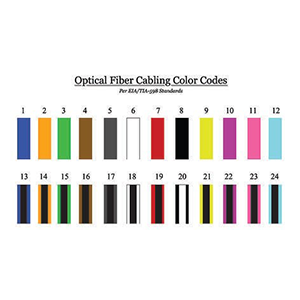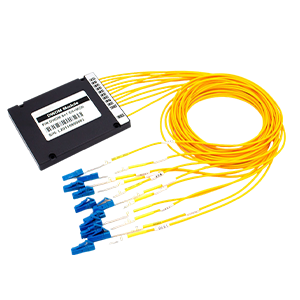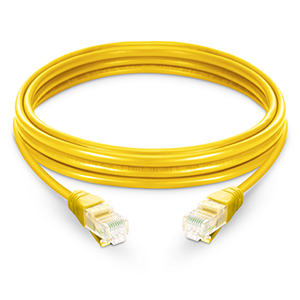Thank you for reading this article, I will introduce you to SFP optical modules and their important role in fiber optic communications. As a common optical fiber transmission solution, SFP optical modules play a key role in the modern communications field.
Overview of SFP optical module
SFP (Small Form-Factor Pluggable) optical module is a small pluggable optical module used for transmitting and receiving optical signals in optical fiber communication systems. It is a standardized interface that can be plugged and unplugged in network devices, such as switches, routers, and network interface cards.
SFP optical modules play a key role in fiber optic communications, allowing flexibility and scalability of fiber optic networks. Through SFP optical modules, a variety of different optical fiber transmission solutions can be realized, including Ethernet, Fiber Channel (Fibre Channel), SONET/SDH (Synchronous Optical Networking/Synchronous Digital Hierarchy) and other optical fiber communication standards.
In short, SFP optical module, as a common optical fiber transmission solution, plays an important role in optical fiber communication. Its flexibility, multi-protocol support and pluggability make it a key component in building high-performance, scalable and reliable fiber optic networks.
Introduction to SFP optical module classification
Different types of SFP optical modules include SFP, SFP+, SFP28, QSFP, etc. Each type of optical module has different characteristics, supported transmission rates, and applicable scenarios. They are introduced below:
-
SFP (Small Form-Factor Pluggable): SFP optical module is the earliest standardized optical module introduced and supports 1GbE (Gigabit Ethernet) transmission rate. It can adapt to different application scenarios through different fiber types (such as single-mode fiber and multi-mode fiber) and transmission distance specifications. SFP optical modules are typically used for short-distance fiber optic connections, such as server interconnections and links between switches within data centers.
-
SFP+ (Enhanced Small Form-Factor Pluggable): SFP+ optical module is an upgraded version of SFP and supports higher transmission rates. It is widely used in 10GbE (10 Gigabit Ethernet) networks, providing higher bandwidth and throughput. SFP+ optical modules can be connected through optical fibers or direct-connect cables (such as direct-connect copper cables), and can adapt to different transmission distance requirements. Its common application scenarios include data center networks, enterprise networks, and storage area networks (SAN).
-
SFP28 (Enhanced Small Form-Factor Pluggable 28): The SFP28 optical module further increases the transmission rate based on SFP+ and supports 25GbE (25 Gigabit Ethernet) transmission rate. It provides higher bandwidth density and performance, suitable for high-speed data transmission and dense network environments. SFP28 optical modules are commonly used in scenarios such as data center networks, cloud computing environments, and high-performance computing.
-
QSFP (Quad Small Form-Factor Pluggable): QSFP optical module is a high-density optical module that supports higher transmission rates. It can achieve transmission rates of 40GbE (40 Gigabit Ethernet) or 100GbE (100 Gigabit Ethernet), providing greater bandwidth and throughput. QSFP optical modules usually use optical fiber connections and can adapt to different transmission distance requirements. It is widely used in data center networks, high-performance computing, supercomputers, and high-speed network interconnection.
Transmission distance and transmission medium of SFP optical module
The transmission distance range supported by SFP optical modules can be determined according to different transmission media and fiber types. Generally speaking, the transmission distance of SFP optical modules can be divided into short distance, medium distance and long distance.
-
Short-distance transmission: Short-distance transmission usually refers to fiber lengths within the range of tens of meters. For multi-mode optical fiber, SFP optical modules can support short-distance transmission, such as tens to hundreds of meters. This transmission distance is suitable for scenarios such as server interconnection in data centers, links between switches, and local area networks. Short-distance transmission over multimode fiber offers cost and performance advantages.
-
Mid-distance transmission: Mid-distance transmission covers fiber lengths ranging from a few hundred meters to several kilometers. For multi-mode optical fiber, SFP optical modules can achieve medium-distance transmission, such as a few hundred meters to two or three kilometers. This transmission distance is suitable for larger-scale enterprise networks, campus networks, metropolitan area networks and other scenarios. It should be noted that as the distance increases, the transmission loss of multimode fiber gradually increases, and fiber amplifiers or fiber relay equipment may need to be used.
-
Long-distance transmission: Long-distance transmission usually refers to fiber lengths ranging from several kilometers to tens of kilometers. For single-mode optical fiber, SFP optical modules can achieve longer-distance transmission, such as tens of kilometers. This transmission distance is suitable for scenarios such as wide area network (WAN) connections, remote communications, and fiber optic backbone networks. Single-mode fiber has smaller transmission loss and higher bandwidth, but its cost is higher than multi-mode fiber.
In terms of transmission media, SFP optical modules can use different fiber types, mainly including multi-mode fiber (MMF) and single-mode fiber (SMF):
-
Multimode fiber (MMF): Multimode fiber is suitable for short- and medium-distance transmission. It has a large fiber core diameter and can accommodate multiple optical modes, but due to the existence of multi-mode dispersion, the bandwidth attenuation of long-distance transmission is large. Commonly used types of multimode optical fiber include OM1, OM2, OM3 and OM4, among which OM4 has higher bandwidth and transmission distance.
-
Single-mode fiber (SMF): Single-mode fiber is suitable for long-distance transmission. It has a smaller fiber core diameter and can only accommodate one light mode, so it has lower transmission loss and dispersion. Commonly used types of single-mode fiber include OS1 and OS2, among which OS2 is suitable for longer transmission distances.
It should be noted that when using different optical fiber types and transmission distances, you need to ensure the compatibility of the optical module and optical fiber, and select the appropriate SFP optical module and transmission media according to specific network requirements.
Application scenarios of SFP optical modules
SFP optical modules are widely used in application scenarios such as data centers, enterprise networks, and telecommunications networks. They provide flexible, high-bandwidth and reliable fiber optic connectivity solutions for a variety of network devices and application needs.
-
Server connection: In data center environments, SFP optical modules are often used for interconnection between servers. By using SFP optical modules, high-speed, low-latency communication can be achieved, supporting fast data transmission and large-scale data processing. This is important for enterprise applications, virtualized environments and cloud computing platforms that handle large amounts of data.
-
Network switching: SFP optical modules are widely used in network switching equipment, such as Ethernet switches. By connecting SFP optical modules, high-speed data forwarding and network interconnection can be achieved. This is of critical significance for building large-scale enterprise networks, data center networks, and campus networks.
-
Storage Area Network (SAN): SFP optical modules play an important role in the SAN environment. They are used to connect storage devices (such as disk arrays) and servers to achieve high-speed storage data transmission. By using SFP optical modules, high-bandwidth, low-latency storage access can be provided to meet applications that require high storage performance and reliability.
-
Wireless base station connection: In telecommunications networks, SFP optical modules are used to connect wireless base stations and transmission equipment. They provide reliable fiber optic transmission solutions that support high-speed data transmission and WAN connectivity. This is crucial to building a stable mobile communication network and providing high-quality wireless services.
It should be noted that the application scenarios of SFP optical modules are not limited to the above cases, but can also be used in video surveillance systems, radio and television, medical equipment, aerospace and other fields. Due to its flexibility and customizability, SFP optical modules have become an important part of optical fiber connections, meeting the high-speed data transmission needs of different industries and application fields.
Performance and functions of SFP optical modules
SFP optical module performance indicators:
-
Transmission rate: The transmission rate of the SFP optical module refers to the maximum data transmission speed it supports. Common transmission rates include 1Gbps, 10Gbps, 25Gbps, 40Gbps and 100Gbps, etc. Different application scenarios and network requirements determine the transmission rate requirements.
-
Optical power: Optical power refers to the intensity of the optical signal emitted by the transmitter of the SFP optical module. It is usually expressed in milliwatts (mW) or decibels (dBm). The value of optical power is crucial to ensure the stability and quality of fiber optic connections.
-
Sensitivity: Sensitivity refers to the sensitivity of the SFP optical module receiving end to the received optical signal. It represents the receiver’s ability to reliably detect and decode optical signals at a given optical power. Sensitivity is usually expressed in units of milliwatts (mW) or decibels (dBm).
SFP optical module functions:
-
Hot-swappable: SFP optical modules have hot-swappable capabilities, which means they can be inserted or unplugged during operation without shutting down the host or network device. This hot-swappable capability makes maintenance and upgrades of network equipment more convenient while also reducing downtime.
-
Digital diagnostic monitoring: Many SFP optical modules support digital diagnostic monitoring (also known as digital diagnostic interface or DDM). This enables the optical module to monitor and report parameters such as optical power, operating temperature, operating voltage, etc. Through digital diagnostic monitoring, network administrators can monitor the working status and performance of optical modules in real time, and perform troubleshooting and performance optimization.
-
Optical fiber connection detection: The SFP optical module also has the function of optical fiber connection detection. They can detect whether the optical fiber is correctly connected to the module and prompt the connection status through indicator lights or alarm signals. This helps network administrators promptly discover and solve fiber connection problems and ensure network stability and reliability.
It should be noted that different SFP optical modules may have different performance indicators and functions. When selecting and using SFP optical modules, the required performance and functions should be determined based on specific application needs and equipment requirements.
Purchase and compatibility considerations of SFP optical modules
When purchasing SFP optical modules, the following are some points to consider:
-
Compatibility: Make sure the selected SFP optical module is compatible with your device. Different devices may have specific compatibility requirements for SFP optical modules, such as supported transmission rate, fiber type (single-mode or multi-mode), fiber distance, etc. Check the specifications of the device to confirm the type of SFP optical module it supports to ensure that the purchased optical module and device can work properly.
-
Supplier reliability: Choose SFP optical modules provided by reliable suppliers or manufacturers. Reliable suppliers will provide quality assurance and good after-sales support to ensure that you get high-quality products and have access to timely technical support. Review information such as a supplier’s reputation, customer reviews, and product certifications to assess its reliability.
-
Price: Price is a factor that needs to be considered when purchasing SFP optical modules. Compare prices from different suppliers and evaluate them in relation to the quality and service they offer. Please note that the lowest price does not necessarily mean the best option. Factors such as price, quality, and reliability must be considered comprehensively to find the most suitable SFP optical module.
Also emphasize the importance of compatibility and interoperability of SFP optical modules with other devices such as fiber optic switches and routers:
-
Fiber optic switch and router compatibility: Make sure the selected SFP optical module is compatible with your fiber optic switch and router. This includes checking the device’s specifications to confirm the SFP optical module types and features it supports. Compatibility issues may cause the device to be unable to recognize or use the optical module properly, so be sure to ensure compatibility between the optical module and the device.
-
Interoperability: When building a network, ensure interoperability between fiber switches, routers and SFP optical modules of different brands or models. This can be learned by consulting the device’s interoperability test report, user manual, or consulting with the vendor. Interoperability issues may cause the optical module to fail to correctly identify or communicate with other devices, so pay special attention to interoperability when selecting devices and optical modules.
Summarize:
In the future, with the development of emerging technologies and applications such as 5G networks, data center interconnections and optical fiber communication standards, SFP optical modules will continue to play an important role and have the potential to meet high-speed transmission needs and provide higher bandwidth.
If you are interested in SFP optical modules, please consider contacting us, we will provide you with professional advice and support to help you choose an SFP optical module solution that suits your needs and achieve efficient fiber optic communications and excellent network performance.
- What is an SFP optic?
- What does SFP mean?
- What is a SFP signal?
- Is SFP electrical or optical?
- What is SFP types?
- Is SFP same as Ethernet?
- What does SFP and SFP+ mean?
- Why use SFP between switches?
-
25G SFP28 1310nm 10km LC Optical Transceiver Module
-
25G SFP28 1310nm 30km LC Optical Transceiver Module
-
25G SFP28 850nm 100m LC Optical Transceiver Module
-
25G SFP28 850nm 300m LC Optical Transceiver Module
-
25G SFP8 1300nm 80km LC Optical Transceiver Module
-
25G SFP8 1310nm 40km LC Optical Transceiver Module





